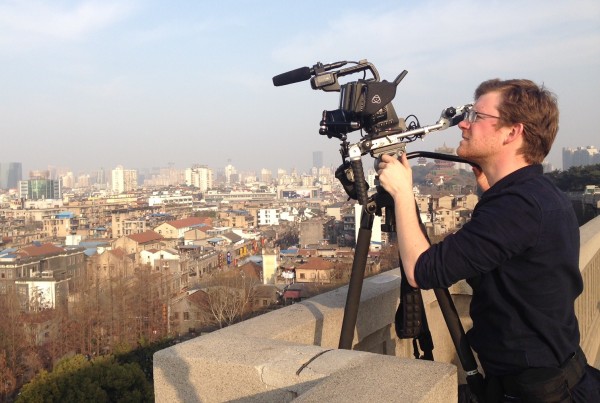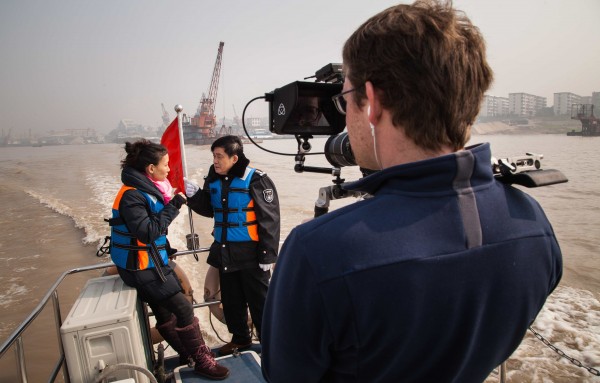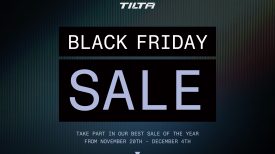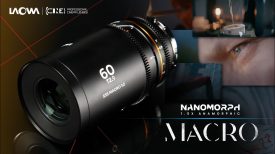Guest post by Maxim Duncan:
I recently produced a video for the Wall Street Journal on Chinese blacksmiths who hurl molten iron at a massive wall, producing glittering showers of sparks. The tradition started in a steel-producing area of Hebei Province over 500 years ago as a way for poor people to enjoy Chinese New Year fireworks for the price of a bit of scrap iron. It’s principally a visual story and it was a lot of fun to do. It also presented an opportunity to be more creative visually than was possible with the more traditional broadcast news I was doing until six months ago.

I was a video journalist in the Reuters Beijing Bureau for over five years before leaving in September to try my hand at a different kinds of video work. In my old job we used the Panasonic range of ENG cameras like AJ-HPX2100 and AJ-HPX250, which were great for capturing action as it unfolded but lacked the cinematic feel of video being produced by the DSLR generation of videographers. When I left, I set myself up with a basic kit centred around a C100 (the original not the mkII) and three Canon zoom lenses – a 24-105mm f4, 17-55mm f2.8 and a 70-200mm f4. Getting to grips with the different system, especially lenses, has been a bit of a challenge, but certainly worth it for the more gratifying images the large sensor affords.
On this shoot I used:
Canon C100 (original version)
3 lenses: 24-105mm f4 / 17-55mm f2.8 / 70-200mm f4
GoPro Hero 4 Black
Miller DV 20 tripod
Audio-technica AT875R short shotgun mic
F&V Z180S Bi-Colour LED light panel
The C100 allowed me to achieve a lot that I would have struggled to do with an ENG camera:
– I wanted to really play with different light effects created by the molten metal and sparks. The large sensor and shallow depth of field allowed for some sparks to be razor sharp and in focus as others out of focus bled and swelled within one shot.
– I wanted to use all natural light, even if often this relied entirely on the fire of a single smelter. This I achieved throughout, except for during the interview, which I lit with the F&V light panel. The ability to push up the ISO without too much noise was essential, and allowed the black to be really deep. I would have had to push the gain up for many shots on an ENG camera and the image would have looked terrible.
– The performance was happening within a pretty controlled environment, so I could plan which lens I wanted to use for what. After so many years of servo zoom lenses, I still find switching between them tricky, and I regularly miss shots while scrambling for a longer lens. This has, however, forced me to reassess proscriptive shooting patterns (wide, close, reverse, repeat), think more clearly about what shot I really need and also pushed me closer to subjects.

The C100 did fall short in one big way for this story: it cannot shoot at high frame rates for slow motion. When I was buying the camera, I was torn between it and the then-brand new Sony FS7, which Newshooter’s Dan Chung was urging me to buy with considerable determination for this very reason. In the end, budget and simplicity made me opt for the C100, and I got myself an Atomos Ninja Star for shoots that require the broadcast standard 50Mbps data rate. I told him that if I regretted the purchase, then I would write a post admitting it, and at least in this respect, I do.
For slow mo on this shoot, instead I took two Go Pro 4 Blacks, which can shoot at 120 fps on 1080p. I had grand plans to place them in every corner but the -10 degrees Celcius did for that: the battery failed pretty much instantly on one Go Pro, and I wasted a lot of time fumbling in the dark with numb fingers trying to monitor the other on my iPhone as it malfunctioned and then died itself. I ended up with just one usable slow motion shot. On cold days in future, I will keep Go Pros in my breast pocket until the last minute. It’s tantalising to think how it might have looked with a variety of slow motion shots, including close ups.
The piece also made me think about online vs broadcast video: While the boundaries between these two platforms are overlapping more by the day, the comparative freedom of online video has been a bit of a revelation for me. The agencies are essential to almost all news broadcasting and reach a huge TV and increasingly online audience, but it by definition they do not allow manipulation of the video or audio.
In this piece, I could put the blacksmith Wang De as the protagonist, allowing him to tell the history, process and experience of the art form himself. I could use music that to me reflected the clanging of metal and play of sparks, and lent the blacksmiths an almost shamanic quality. I could also use shots of any length, gentle pans and extreme focus shifts, slow motion and fades to black. I wanted to use visual tricks to only hint at the main performance for the first half of the edit, to make the viewer wonder whether an industry or an art form was being described, rather than putting my ‘best shots first.’
The response to the piece has also highlighted the potential for video to be widely seen online. As well as bouncing about on social media platforms like Twitter and Facebook, the piece reached an unexpected audience when it was put as the main featured video on China’s version of Youtube, www.youku.com, and got over a million views in less than a day. (OK, so that’s less that 0.1% of the population, but still…)
I’m late to the party, but it’s exciting that within the world of news there is a growing space to work like this.
Max Duncan is a British video journalist based in Beijing for over six years covering China and the region. He has worked for media including Reuters, the Daily Telegraph, the Wall Street Journal, the BBC, the New York Times.





